I’m embarrassed to say that I have misrepresented an historical fact to friends and family when I pointed out the aqueduct near Lucca and exclaimed, “Isn’t it amazing that those Romans could build something so wonderful, which could last 2,000 years.” It was only a ten-fold mistake, but I should have known better than to guess.
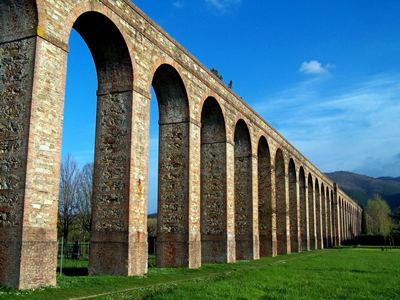
It was in the early 1700s that the Lucchesi realized it was necessary to build a large aqueduct to supply the city with water of good quality, replacing water from oft-contaminated wells. From that time, not being ancient Roman hydrologists who had solved the problem hundreds of times throughout Europe, Tuscan mathematicians and hydraulic engineers engaged in lengthy discussions, elaborating various projects that did not lead to concrete results for almost 150 years.
The aqueduct was built only in the following century when Luccese architect Lorenzo Nottolini took into consideration several earlier hypotheses and came up with the best solution. Work began in 1823 and, following several interruptions, the project was completed in 1851. The water was drawn from several springs on the northern slope of Mount Pisano, passed through several layers of stones and gravel to become pure and clear. A large part of its conveyance works, built between 1825 and 1840, are still visible today in the parkland of the Monumental Aqueduct of Guamo.
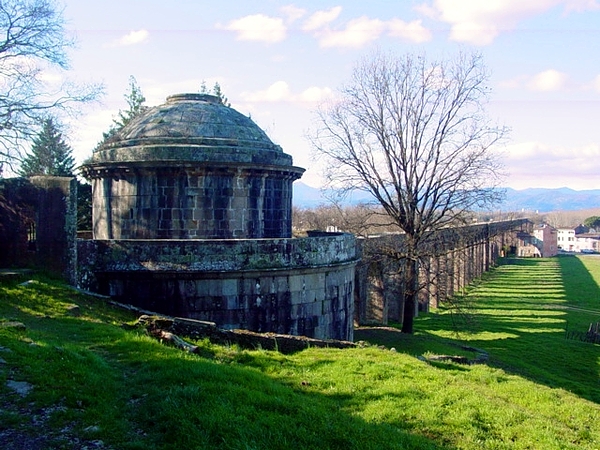
Built in an elegant neoclassical style, the little temple-cistern of Guamo collected water from the springs. Inside, it has a basin divided into two parts. Water was channeled inside the conduit that passed over a row of more than 400 arches in brick and masonry for a length of about 3,250 meters, the series of which is today interrupted by the A11 motorway, the road I travel, pointing out the fascinating structure.
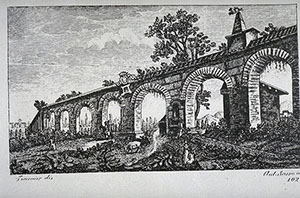
The water arrived at another temple-cistern – San Concordio – a circular-plan building in the neoclassical style. The water poured from the conduit into a large marble basin; from here it fell into two tunnels containing very large smelted iron tubes, which conveyed the water about 2,000 meters underground into the city and a large fountain in the square beside the cathedral. By making the tubes moveable, Nottolini provided for the effects of the metal lengthening and shortening due to heat and cold, so as to avoid the ruptures that had occurred in other aqueducts. The hydraulic system of the aqueduct was completed by a system of fountains that furnished the urban center.
Other Aqueducts in the Lucca Region
Older aqueducts can be found both north and south of Lucca. They are not Roman either, but they pre-date the Nottolini aqueduct.
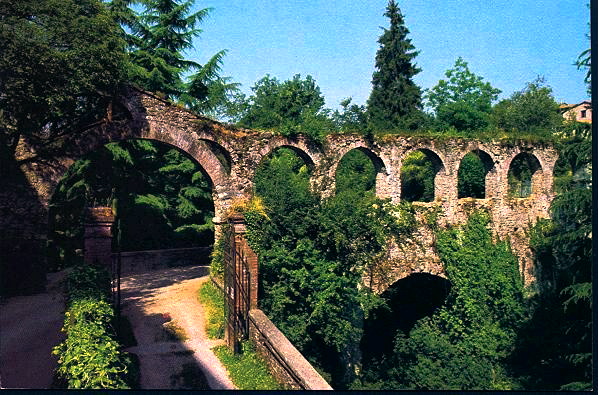
Barga
Built in the 15th century, the aqueduct of Barga is of stone construction (differing from those made of terracotta bricks) that assured water to the fountains in the historical center. Today, a spectacular series of arches can be found in the Parco Fratelli Kennedy (Kennedy Brothers Park), also the site of the medieval moat of the village of Barga.
Medici Aqueduct of Asciano
The project for an aqueduct capable of supplying the city of Pisa with the water of the Pisan Mountains near Lucca was ordered by Grand Duke Cosimo I de’ Medici, but credit must go to his son, Ferdinando I, however, for the construction of the long aqueduct, which reach the walls of Pisa from Bottino di San Rocco in the Fonti Valley.
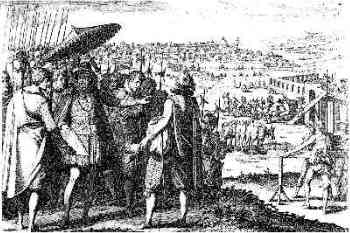
Begun in 1592, designed by architect Raffaello di Zanobi di Pagno, who was succeeded by Andrea Sandrini from Siena, it had more than 900 arches and wound along a course of six kilometers. In the 1597 treatise, Dei Bagni di Pisa, famous physician Girolamo Mercuriale considered the aqueduct of Asciano to be among “the almost divine works of Ferdinando I”. The engraver Jacques Callot depicted the Visita di Ferdinando I ad Asciano in an engraving created in the 1620s, documenting the Grand Duke’s direct interest in the works.
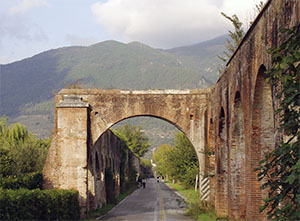
Today, portions of the Medicean aqueduct still stand in the countryside between Asciano and Pisa, providing a picturesque route for walks and cycling.
